|
Centrip Editorial Board
Sumo in Nagoya

Sumo (相撲), a traditional Japanese sport where two titans battle for supremacy in the ring. Their dramatic struggles, well-defined rules, and deep cultural traditions help cement Sumo in the minds and imaginations of Japanese and overseas travelers alike.
Sumo is Japan's national sport and has profound meaning. In competitions (大相撲 - Grand Sumo Tournament) Sumo wrestlers use a variety of different techniques. Join me as I dive into the world of Sumo and show you the best way to get tickets and enjoy the sport!
Table of Contents
Sumo: Culture and National Sport
1.The History of Sumo
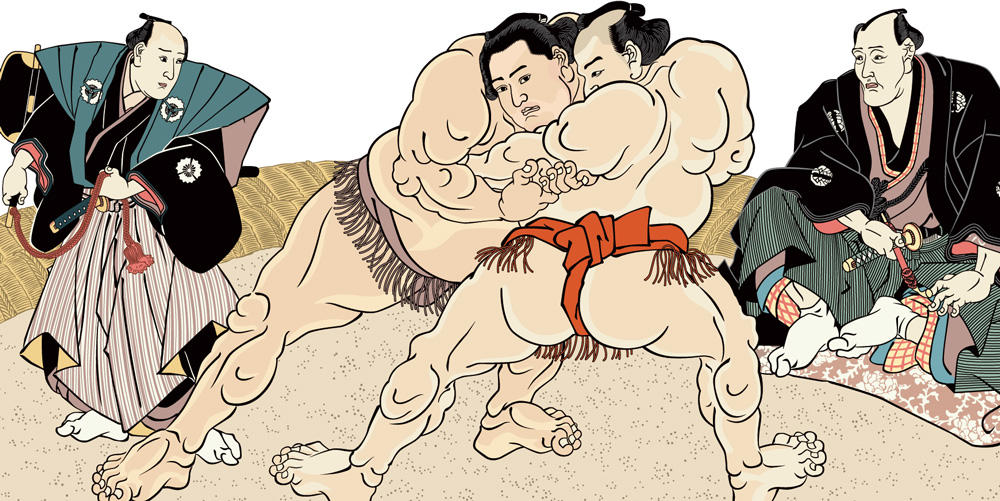
Sumo is more enjoyable when you know a little about its background. First appearing in ancient festivals and Sumo has enjoyed over 1,500 years of history. It originated as a ritual in Japan's agrarian past, matches were held to see the fortunes of crops, pray for a bountiful harvest, and thank the God's for protection. Even to this day, the Sumo ring is still made in the image of Shinto, and rice, salt is buried under the center of the Dohyo (土俵 - the ring in which Sumo wrestling bouts are held) as offerings to the gods.
In the Edo period, Sumo first appeared as a profession. The regular Sumo tournaments, along with Kabuki(歌舞伎), were an important element of popular entertainment. Sumo was established in 1757 to preserve the system of ranking lists, records, and so on.
2. Watching Sumo
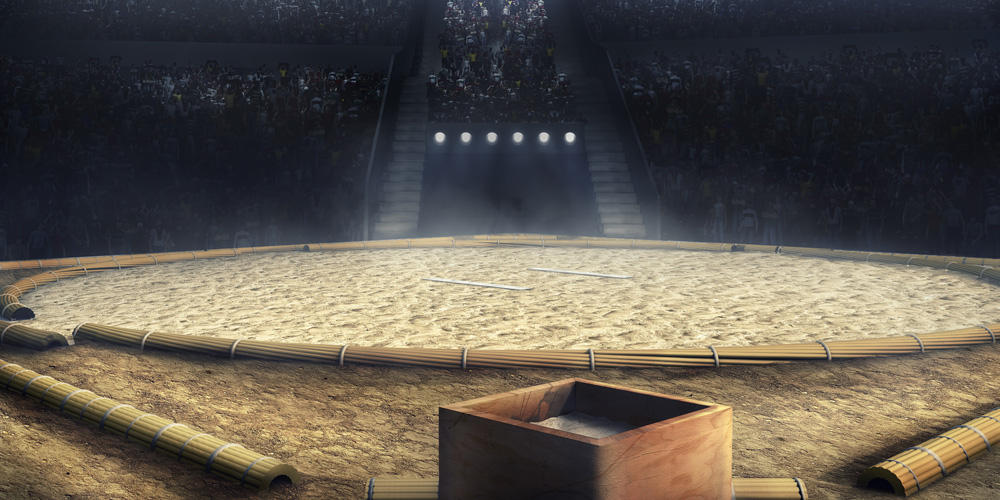
Sumo is played in a circular ring with a diameter of 4.55 meters.
After the two Sumo wrestlers come to the ring, first they squat, then rub their hands, then clap their hands, stretch their palms, and then reverse their hands. This series of actions was called Chirichozu (塵手水/ちりちょうず), to indicate that they did not bring any weapons to play. Next, they raise their left foot and right foot alternately and stop the ground with their foot. Then, the ceremony in which the Sumo wrestlers (力士 - Rikishi) drink a mouthful of water and return it to a cotton paper in the southeast and southwest corners to purify the ring. When the two wrestlers return to the Dohyo again, they return to the southeast and southwest corners of the ring and scatter salt on the ring. The sprinkling of salt purifies the ring to get rid of evil spirits.
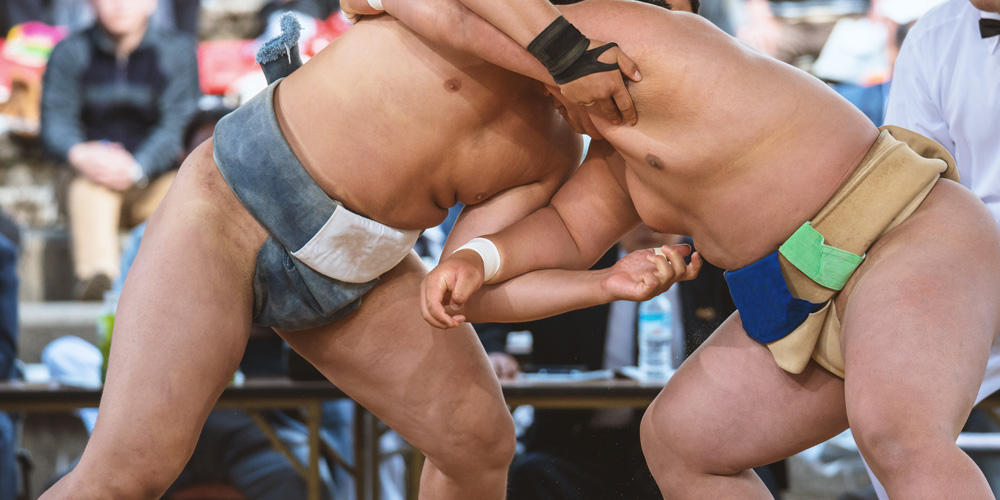
Two wrestlers are swinging the bat again. When the Gyoji (行司 - Sumo referee) waves their Gunbai (軍配 - Sumo referee's fan) the match begins. The Sumo wrestlers can grab each other's hips, hold their necks, torso, and limbs, hit each other's breasts, and stumble with their feet during a competition. But there is no kicking in the chest or stomach, grabbing their opponents hair, hitting their ears, choking them, or gouging at the eyes.
In a match, victory is achieved by knocking one's opponent off their feet or by forcing their opponent to leave the ring. There is no time limit for a match.
Sumo Summer Satisfaction in Nagoya!
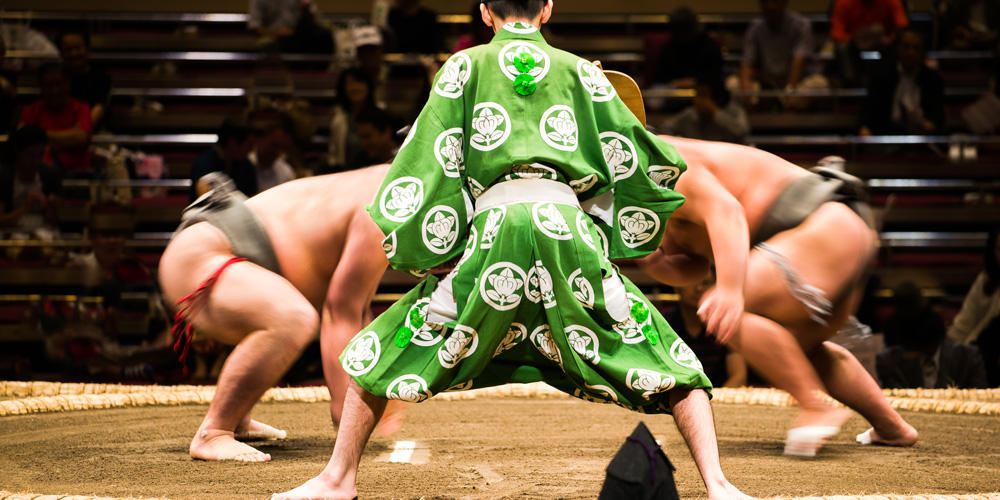
If you want to watch Sumo live, there are several changes throughout the year. A regular Sumo tournament is held 6 times a year for 15 days. Among them are Ryōgoku Kokugikan (両国国技館 - Indoor arena in Tokyo) held in January, May, and September, Osaka Prefectural Gymnasium is held in March, Nagoya Aichi Prefectural Gymnasium is held in July, and Fukuoka International Center is held in November.
If you want to enjoy the power and beauty of Sumo in July, Nagoya's Sumo is an important venue. The 2019 games will run from July 7 to July 21.
On July 6, a Dohyo festival will be held at the venue on the day before the match. It is a traditional event held to pray for peace and security at the height of the race. In Dohyo festival, Shinto prayers are spoken by the Gyoji, and lucky things such as Kachiguri (勝栗 - Dried chestnuts) are buried in the hole dug in the center of the Dohyo. The ceremony starts at 10 AM and admission is free.
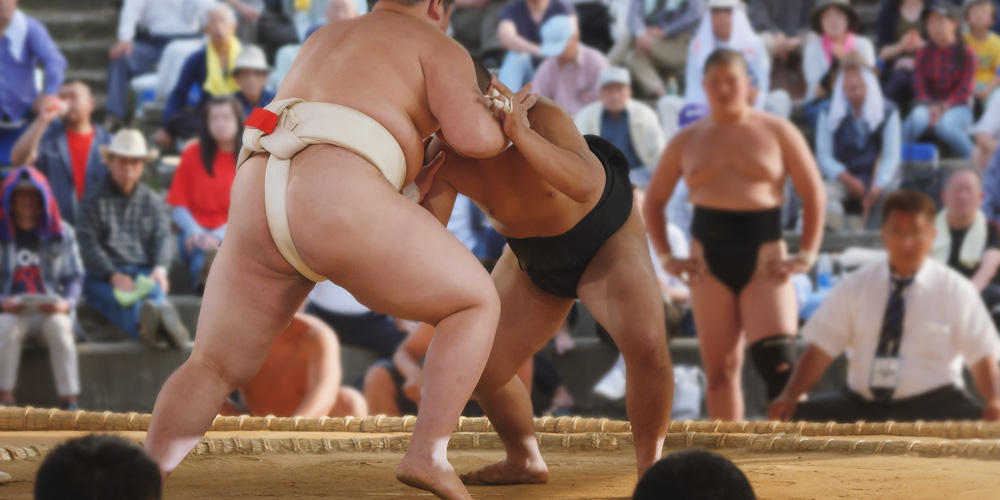
On July 7, the 1st round will start at 8:30 AM on the first day of the tournament, new wrestlers will fight their matches first, while the higher-ranking wrestlers will have matches in the afternoon. At 3:30 pm, the Makuuchi Rikishi (幕内力士 - Senior grade Sumo wrestlers) will hold an entrance ceremony in the ring, so don't miss it.
The game starts at 8: 40 the following day. On the final day of the event, the best wrestler will be selected and an award ceremony will be held.
July: Ticket and traffic information
If you can't wait to watch Sumo after reading up to this point let me tell you how to get tickets.
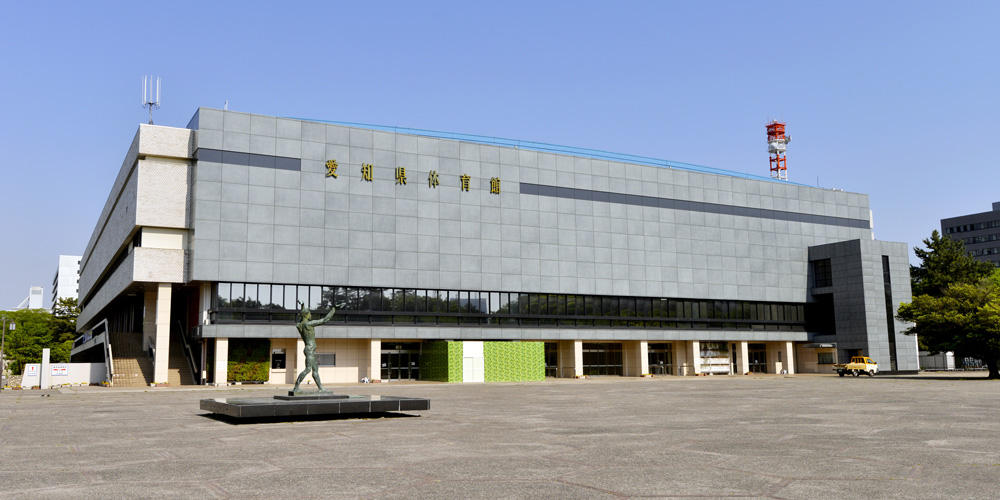
The Nagoya Sumo Championship is held every year at Aichi Prefectural Gymnasium. Tickets are required to watch Sumo tournaments and can be purchased directly from the Japan Sumo Association's Web site. Front row seats are expensive at ¥14,800, but you'll be able to feel the impact of the game up close. 2nd-floor seats are cheap, but non-reserved seats are ¥2,900.
If you couldn't get a ticket in advance, you can buy it on the day. Same-day tickets go on sale at 7:45 AM at the Aichi Prefectural Gymnasium Ticket Office, for ¥2,900 for adults and ¥200 for children (ages 4–15). The number of tickets is limited, so please line up early.
For more information and access to Aichi Prefectural Gymnasium, click on Spot Information below.
Morning Sumo
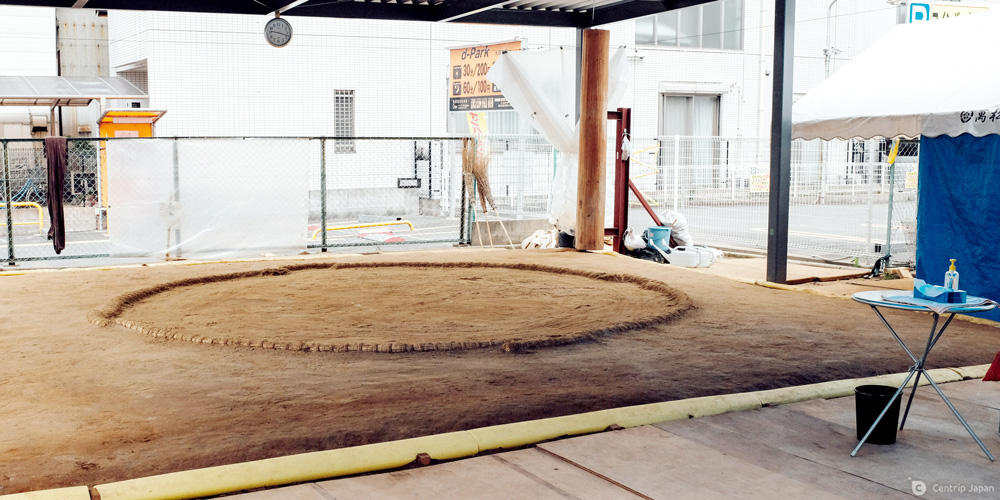
There is another way to see Sumo for free aside from an actual performance! Go to the Sumo stable (相撲部屋 - Sumobeya) and watch the morning practice. Here are a few commonly asked questions, "Can I enter the Sumo stable if I'm not a member of the staff?", "How do Sumo wrestlers live?", "How did they develop such a great figure?".
The Sumo morning practice is free, but it takes time and effort. Sumo wrestlers have 49 rooms under the Japan Sumo Association, which are Sumo stables, but they have different rules, and you can't see the morning practice in just any of them. Each room has its dormitory, but if you want to see the morning practice, first go to the Sumo stable's website to find out where the dormitory is and see if you can watch the morning practice.
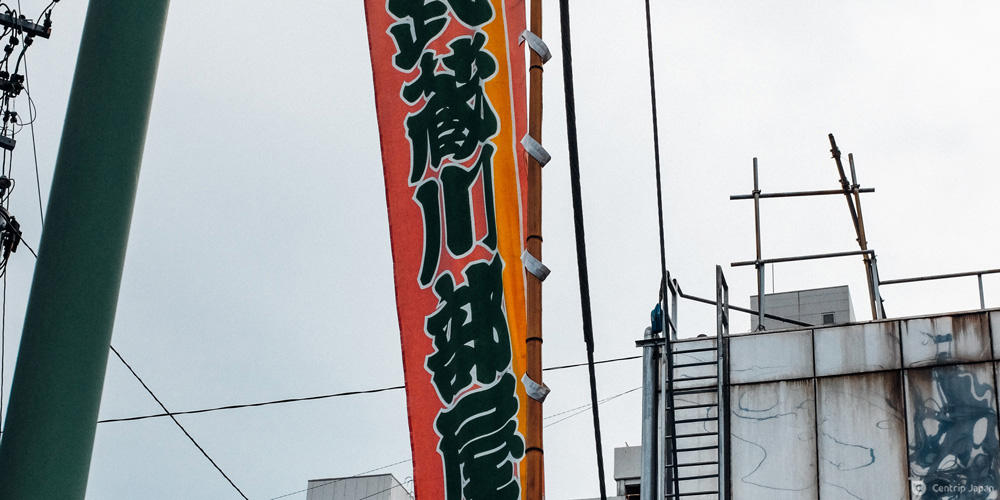
This time, I went to see the morning practice of Musashigawa-beya Sumo Stable (武蔵川部屋). The dormitory of Musashigawa-beya is located in the Bansho-Ji Temple (万松寺) in Osu, Nagoya City, and the morning practice starts at 8 AM and requires no reservation.
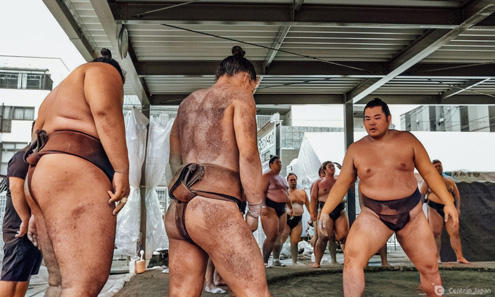

When the staff first saw the Sumo wrestlers up close, they were struck by their impressive figures. Sumo wrestlers are naked from the waist up in their loincloth, and their large frames leave a strong impression on people watching them.
Sumo wrestlers are not simply fat but also muscular, many say it has something to do with their unique Sumo cuisine. Among it is the main dish, a hot pot called Chankonabe (ちゃんこ鍋) is the staple food of Sumo. Chankonabe is sold at the Sumo venue in Nagoya, so if you are interested, you should not miss your chance to try this dish out.
The wrestlers circle the stage and rushed to the central ring. The spectators tried to stand in front of the barbed wire without knowing the rules, a Sumo wrestler called attention to him, but his voice was surprisingly gentle, in sharp contrast to his stately appearance.
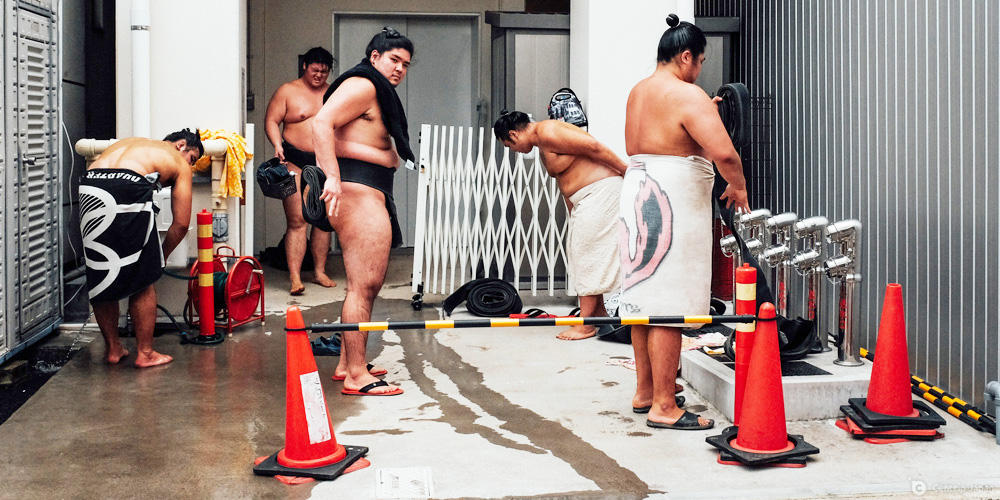
As the summer heat continues, Sumo wrestlers who finished training pour water on their bodies one after another. A Sumo wrestler was first surprised when he saw a short film being shot and posed for the photo. I'm going to the stadium by bus to see the first match of the day. Good luck!
Regardless of the cold and heat, Sumo wrestlers get up at 5 AM every day and turn off the lights at 8 and 9 p.m. to rest. The daily training lends to the outstanding performance of the Sumo wrestlers. I respect their patience, will, and culture.
It takes one day to satisfy pilgrims.
You can't watch Sumo unless you go to Tokyo, Osaka, Nagoya, and Fukuoka, can you?
That's not true. Sumo wrestlers travel around the country in April, August, October, and December to spread Sumo culture and enhance the local cultures. During the pilgrimage, the wrestlers talk with each other, and interact with fans and take pictures. These events can be very enjoyable to participate in.
The event is compressed into one day with limited time. There are handshake events, drum beating, and popular Sumo wrestlers, fairs, and entrance ceremonies for the Yokozuna (横綱-Grand wrestler).
Unlike an actual pilgrimage, you can take your time to enjoy the relaxing atmosphere of the one-day pilgrimage.
Wrap-up
Whether a Sumo wrestler hits hard on the court or works hard every day to train himself, if he embodies Sumo, he will leave you with a strong impression. I encourage you to go and experience Sumo and find a new motivational force in your life.

